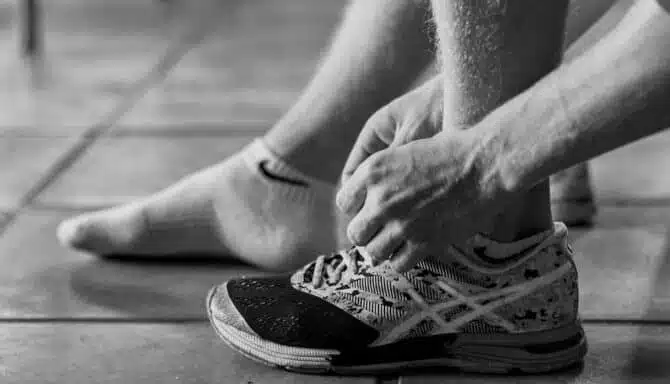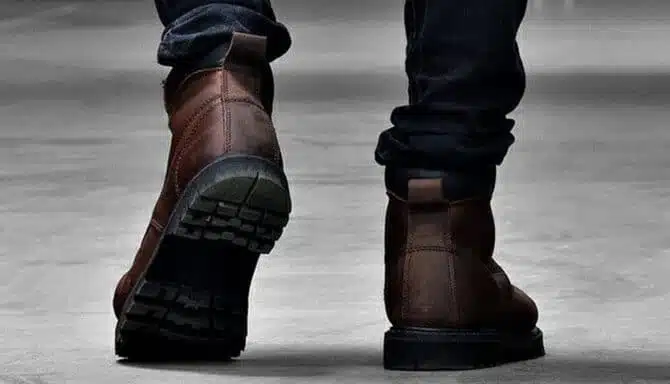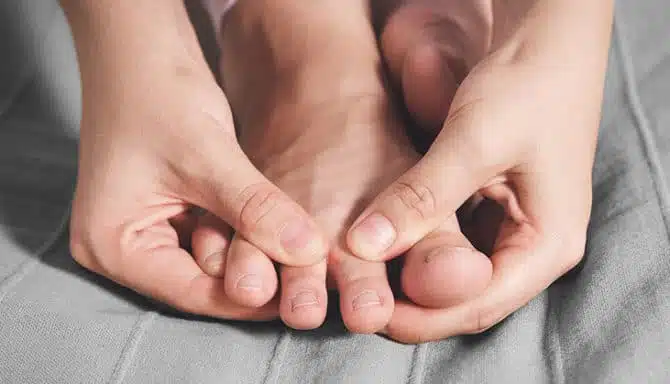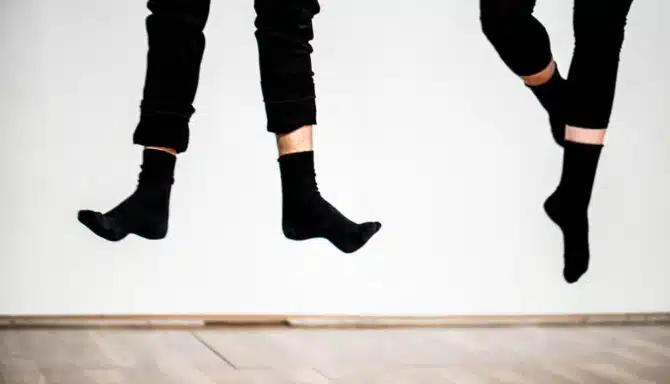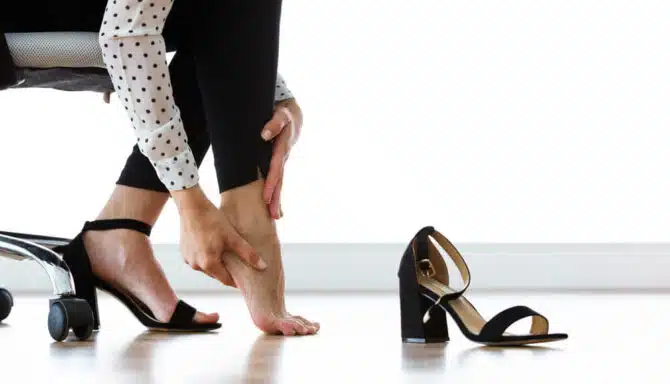Did you know that of all major joints, the ankle is the most commonly injured? In fact, there are a variety of conditions that affect the ankle. Here are the 4 Most Common Ankle Injuries.
Ankle Sprain
Sprains rank number one among the most common ankle injuries. There are three primary forms of ankle sprains: inversion, eversion and high. Ankle Sprains occur when the ligaments overstretch and damage. Generally, sprains take 2-3 weeks to recover from, but you can continue to walk and be mobile if you have your ankle taped, and secured. Though ankle sprains are a very common sports injury, they can happen to anyone.
Inversion
An inversion sprain occurs when your ankle twists inwards.
- Ankle rolls inwards
- Most common form of ankle sprain
Eversion
An eversion sprain occurs when your ankle twists outwards. Eversion sprains impact the deltoid and medial ligaments of your ankle. Eversion sprains aren’t as common as inversion sprains because of the ligaments’ strength.
- Ankle rolls outwards
- Less common than inversion sprains
- Accounts for 10-20% of sprains
High Ankle
A high angle sprain occurs when the foot twists outward due to the force. Here, we get a sprain of the syndesmotic ligaments which connect the tibia and fibula (shin bones).
- Affects the high ankle
- More common in sports (football, basketball, soccer) than in everyday life
To help prevent sprains, follow these Ankle Strengthening Exercises. Additionally, a Better Shoe Can Prevent Ankle Sprains. You’ll want shoes with a good fit, strong treads, and orthotic inserts if necessary. We carry a full line of footwear in the clinic including Leading Shoe Brands that you can choose from.
Tarsal Tunnel Syndrome
Tarsal Tunnel Syndrome is a common foot condition that affects the ankle. It’s a result of a damaged posterior tibial nerve, and is considered the ankle’s version of carpal tunnel syndrome. Tarsal tunnel syndrome is the most common nerve entrapment of the ankle. The tarsal tunnel is a narrow space on the inside of the ankle next to the ankle bones. The tunnel is covered with a thick ligament that helps contain its inner workings – veins, arteries, tendons, and nerves. Notably, the tibial nerve runs through the tarsal tunnel.
Tarsal tunnel syndrome occurs when the tarsal tunnel compresses. Imagine you squeeze a casing of wires. The more pressure you exert, the more you put onto the fillings inside. In this case, these are the nerves, arteries, and tendons inside. Symptoms include sharp, shooting pain, pins and needles, or a burning sensation on the inside of your foot, close to where your foot meets your ankle. Some say that pain can be severe enough to cause a person to limp, and individuals may describe a Radiating Pain that cannot be localized to one spot.
Achilles Tendonitis
The Achilles is the longest tendon in the body, and can withhold extreme amounts of stress. The tendon connects the calf to the heel bone, and can become inflammed over time if overused. If this occurs, the injury is known as Achilles tendonitis. The most common symptom of Achilles Tendonitis is a mild ache or pain in the back of the lower-leg or above the heel, especially first thing in the morning and after exercise. The tendon can also be warm, swollen and irritated with certain ankle movements. This can cause pain in and around the ankle as well, as other joints and muscles attempt to compensate for the damage to the Achilles.
The following can cause Achilles tendonitis:
- lack of conditioning in your lower leg muscles
- excess strain on the Achilles tendon
- bone spurs in the heel rub on the Achilles tendon
- untreated flat feet lead to stress on the posterior tibial tendon
To treat, and prevent Achilles tendonitis, you can:
- Strengthen and stretch your Achilles
- Rest, or decrease activity
- Invest in Custom Orthotics
- Use Over-the-counter Insoles
Dorsal Spurs
A Bone Spur is a benign growth and occurs on all parts of the body including on the heel, ankle, and toes. Specific to the ankle area, a Dorsal Spur is a bone growth at the insertion of the Achilles tendon. Bone spurs develop as your body’s response to trauma in the area. The body’s defense mechanism begins to grow bone to help protect the area against further damage. So, as these deposits build up, there is less area for your body to move freely, which can cause seperate issues due to the underlying bone spur.
There are two sides to this: one is that the injury is quite common. Two is that although bone spurs are common, only 5% of people with a bone spur feel pain.
- Straining foot muscles and ligaments
- Over-stretching the plantar fascia
- Repeated tearing of the thin lining of the heel bone
Generally, you should not worry about dorsal spurs. But if you do suspect a dorsal spur, or any sort of other ankle pain over more than a short period of time, consult a foot expert for next steps.
Questions About Your Ankle(s)? We Can Help!
Do you have an ankle injury? We’re confident in our ability to help inform you and solve all types of common ankle injuries with the least amount of discomfort as possible. Don’t hesitate: Call us to ask about a quick question and we’d be happy to point you in the right direction!
Call us at 416-769-3338 or Book Your Assessment Today!
